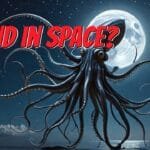Right now, there are over eight billion of us on this planet. Every single one is a thinking, feeling person, capable of watching this, of wondering, of asking. how? But have you ever really stopped to think about the journey your own life represents? Not just your lifetime, but the epic, four-billion-year saga written in your DNA. It’s an unbroken chain of survival stretching back through ice ages and asteroid strikes, directly connecting you, right now, to the very first spark of life on a hostile, alien world.
This is the story of that journey. It’s a story of chance and necessity, of disasters and brilliant innovations, of transformations so bizarre they’re hard to even imagine. It is the story of evolution. From a single, simple cell in a primeval ocean, to the complex, conscious being that is you. We’re going to trace this incredible path and explore the key moments that made all of this possible. This is the ultimate trip through time, the full story of life on Earth.
Let’s try a little thought experiment. Imagine Earth’s entire four-and-a-half-billion-year history squeezed into a single calendar year. On this scale, the planet itself doesn’t cool down until early March. The first, simplest life? It doesn’t show up until the end of that month. Dinosaurs don’t arrive until mid-December and roam for just about two weeks. The asteroid that wiped them out strikes on December 26th. And what about us? All of recorded human history, from the first cave paintings to the device you’re watching this on, flashes by in the final minute before midnight on New Year’s Eve. Your own life is just a fraction of the last second. We are the newcomers, the last-minute arrivals to an ancient story. So, let’s rewind the clock and go back to the very beginning.
Our journey starts in a time so ancient it’s almost impossible to wrap your head around: the Archean Eon, over four billion years ago. The young Earth was not the friendly blue marble we know. It was a violent, alien planet. Picture a hellish landscape of raging volcanoes, a toxic atmosphere with no oxygen, and murky, chemical-green oceans. The sun was fainter, and the planet was constantly being slammed by asteroids and comets left over from the formation of the solar system. By all accounts, it was a profoundly unwelcoming place. And yet, it was here that the greatest mystery of all began: the origin of life.
For decades, the popular image was of a primordial soup a warm little pond where lightning zapped simple chemicals into the complex molecules of life. But a newer, and frankly more compelling, idea takes us somewhere else entirely: the bottom of the deep ocean. Here, at hydrothermal vents, superheated, mineral-rich water billowed up from the seafloor. These vents were perfect natural chemical reactors, offering a steady supply of energy and raw materials where simple molecules could become complex, all while shielded from the harsh radiation bombarding the surface. It was likely in a dark, energy-rich cradle just like this that the first things we could really call life got their start.
These first living things weren’t grand creatures. They were microbes, single-celled organisms way simpler than any bacteria today. These were the prokaryotes bacteria and archaea. For two billion years, they had the entire planet to themselves. That’s a staggering length of time, nearly half of Earth’s history, ruled by these silent, invisible organisms. They were incredibly resilient, mastering every environment from boiling hot springs to the freezing abyss.
For over a billion years, these microbes lived in a world without oxygen. But then, one of them stumbled upon a revolutionary new trick. A type of bacteria called cyanobacteria invented something that would change the world forever: photosynthesis. By harnessing sunlight, these tiny organisms began to suck in carbon dioxide and release a waste product: oxygen.
At first, all this new oxygen was immediately soaked up by iron in the oceans, which rusted and sank, forming the vast iron bands we mine for steel today. But the cyanobacteria just kept going. For hundreds of millions of years, they pumped out oxygen until the oceans couldn’t hold any more. Oxygen began to flood into the atmosphere for the first time.
This was the Great Oxidation Event, and it was both a miracle and a complete catastrophe. For most of the anaerobic life on Earth, oxygen was a deadly poison. Its arrival triggered the planet’s first, and possibly largest, mass extinction. The world was remade. The sky turned blue. The air became breathable. The stage was set for a new kind of life, one that could use this powerful new molecule. The long reign of simple microbes was ending, and the era of complexity was about to begin.
The Rise of Complexity – A New Kind of Cell
For two billion years, simple prokaryotic cells had the planet all to themselves. They were successful, sure, but they were also limited. For life to take its next giant leap, it needed a whole new design. That leap happened around two billion years ago, and it wasn’t a gradual change it was a revolutionary partnership. This is the theory of endosymbiosis.
Imagine an ancient, larger cell hunting for food. It swallows a smaller bacterium. But instead of being digested, the little bacterium survives inside its host. This was no ordinary meal; it had a neat trick for surviving in the new, oxygen-rich world it could use oxygen to generate huge amounts of energy. In return, the host cell gave it protection and food. It was a perfect partnership. Over generations, this captured bacterium became a permanent part of the host cell. It evolved into what we now call mitochondria, the powerhouses that are in almost all complex cells today, including yours.
Something similar happened again when one of these new, super-charged cells swallowed a photosynthetic cyanobacterium. That captured partner became the chloroplast, the part of the cell that lets plants and algae turn sunlight into energy.
This whole process gave rise to the eukaryotic cell the type of cell that makes up every animal, plant, and fungus on Earth. Unlike the simple prokaryote, the eukaryotic cell was a marvel of organization. It had a nucleus to protect its DNA, different compartments called organelles for different jobs, and of course, those powerful mitochondria. This new cell model was a platform for incredible innovation.
With this new complexity came the next huge breakthrough: multicellularity. Around 1.2 billion years ago, some of these eukaryotic cells started sticking together after they divided, forming colonies. At first, they were just simple blobs of identical cells. But soon, they began to specialize. Some cells focused on moving, others on feeding, and others on reproduction. This allowed organisms to get bigger, more efficient, and adapt in ways a single cell never could. The first true multicellular organisms had arrived.
Life was no longer just a microbial film on rocks. It was now made of distinct, three-dimensional organisms. This laid the groundwork for the explosion of diversity that was about to come. For hundreds of millions of years, evolution tinkered with these new designs in the oceans. Scientists sometimes call this the Boring Billion, which is a bit unfair. Because under the surface, evolution wasn’t bored at all. It was busy assembling the genetic and cellular toolkit for its most spectacular creation yet.
For three billion years, life had been a slow, quiet affair. Then, about 541 million years ago. boom. In a geological blink of an eye, the planet witnessed an unprecedented burst of creativity known as the Cambrian Explosion. Suddenly, the oceans were teeming with a bewildering variety of complex animals.
It was as if life had woken up and decided to try every body plan imaginable. Strange and wonderful creatures filled the seas. You had the trilobites, armored arthropods that would become one of the most successful animal groups of all time. You had bizarre creatures like Wiwaxia, covered in spines, and the freaky, five-eyed Opabinia with a frontal nozzle like a vacuum cleaner. And towering over them all was the apex predator of its day, Anomalocaris, a giant swimming hunter with fearsome grasping claws.
So, what lit the fuse for this evolutionary frenzy? It wasn’t just one thing, but a perfect storm of factors. Oxygen levels were still rising, providing the fuel needed for bigger, more active bodies. The genetic toolkit for building complex animals was now in place, including a set of master control genes called Hox genes. These genes act like architects, laying out the basic body plan where the head goes, where the limbs sprout. With these genes, evolution could suddenly experiment with new designs at incredible speed.
But maybe the biggest driver was a brand-new ecological interaction: predation. For the first time, animals were actively hunting other animals. This kicked off a high-stakes evolutionary arms race. Prey evolved hard shells and sharp spines. In response, predators evolved stronger claws and better eyes. This back-and-forth pressure sped up evolution dramatically. Hard body parts, like shells and skeletons, were a game-changer. They offered protection, supported larger bodies, and, crucially for us, they fossilized incredibly well, leaving us a rich record of this bizarre and wonderful ancient world.
The Cambrian Explosion established the blueprints for the animal kingdom. The world had gone from being populated by simple, squishy things to a vibrant, complex, and dangerous ecosystem. The stage was set, and life was ready for its next great adventure: the conquest of land.
For almost its entire history, life was stuck in the water. The oceans were bustling, but the land was a desolate, empty frontier. It was a world of bare rock, baked by radiation, and lacking the one thing all life needed: water. Leaving the ocean meant facing crushing gravity, the constant threat of drying out, and breathing air instead of water. But the rewards were huge: untapped sunlight, nutrients, and endless space.
The first pioneers weren’t animals; they were plants. Around 470 million years ago, the first land plants evolved from green algae living in the shallows. These early colonists, probably like modern mosses, had to develop waxy coatings to hold in water and tiny pores to breathe. They clung to the damp edges of rivers, slowly turning the brown world green. Over millions of years, they developed woody structures to fight gravity and a vascular plumbing system to transport water. This allowed plants to grow tall, forming the first forests.
As plants took hold, they created a welcoming new home for animals. The first critters to crawl ashore were likely arthropods the ancestors of insects and spiders who already had a supportive exoskeleton. But the most important land invasion was still to come. It was the journey of our own ancestors: the vertebrates.
The key to this transition lies in a rockstar fossil named Tiktaalik roseae. Discovered in the Canadian Arctic, Tiktaalik is the perfect transitional form. It had the scales and fins of a fish, but it also had a flat, crocodile-like head and fins with the bone structure of a limb. It had a wrist and fingers, allowing it to do a push-up in the shallows. This fishapod shows us exactly how our arms and legs evolved.
From ancestors like Tiktaalik came the first amphibians. They could walk on land, but they were still tied to the water, needing to go back to lay their jelly-like eggs. The final chain was cut by the evolution of the amniotic egg. This self-contained private pond, with its protective shell, allowed animals to lay their eggs on dry land. This innovation unleashed the reptiles, who could now colonize even the driest environments.
The world was now green and teeming with life. But before the reptiles could truly take over, life faced its greatest test. Around 252 million years ago, the Permian-Triassic extinction event, The Great Dying, struck. Massive volcanic eruptions in Siberia triggered runaway global warming and ocean acidification. It was the most severe extinction in Earth’s history, wiping out around 96% of marine species and 70% of land species.
Life was pushed to the brink of annihilation. But from the ashes, the survivors would inherit a new world. And among them were the creatures destined to define the next era: the dinosaurs.
The Mesozoic Era is rightly called the Age of Reptiles. In the wake of The Great Dying, the surviving reptiles diversified, filling thousands of empty ecological roles. This led to a dynasty that would rule the planet for over 150 million years: the dinosaurs.
And what an age it was. From the Triassic to the Cretaceous, dinosaurs were the undisputed kings. They evolved into an incredible array of forms, from the giant, plant-eating sauropods to the terrifying T-Rex. They conquered the land, while other reptile groups took to the skies as pterosaurs and ruled the seas as ichthyosaurs.
And where were our ancestors in all this? We were there! But we were. tiny. Shrew-like creatures, living in the shadows of the giants, scurrying through the undergrowth at night. For 150 million years, we were the supporting cast in a dinosaur world. Our time had not yet come. But that was about to change, dramatically.
Sixty-six million years ago, the sky fell. A massive asteroid, ten kilometers wide, slammed into the Yucatán Peninsula in Mexico. The impact released the energy of millions of nuclear bombs, triggering a global firestorm and sending a thick cloud of dust into the atmosphere that blocked out the sun for years.
This impact winter caused photosynthesis to grind to a halt. Plants died, and the entire food chain collapsed. The great dinosaurs starved. An estimated 75% of all species on Earth were wiped out. It was a planetary reset button.
But this catastrophe was also an opportunity. With the dinosaurs gone, countless ecological niches were suddenly empty. And our small, resilient mammal ancestors who survived the nightmare were perfectly poised to take over. In the aftermath, mammals underwent a spectacular diversification.
No longer needing to hide, they grew larger. They evolved to eat plants, hunt other animals, live in trees, and even return to the sea. The Cenozoic Era, our era, had begun. It would be the Age of Mammals. And among this incredible diversification, one group of tree-dwelling mammals was set on a path that would lead, eventually, straight to us. This was the primate lineage.
Our own story starts in the trees. After the dinosaurs vanished, our primate ancestors flourished. They developed key traits for life in the canopy: grasping hands for clinging to branches and forward-facing eyes for 3D vision, perfect for judging leaps. But as Africa’s climate changed and forests gave way to open savannas, some primates were forced onto the ground. This new environment drove one of the most important transitions in our history: walking on two legs.
Bipedalism freed the hands. Hands no longer needed for walking could now carry food, wield tools, and communicate. Our early ancestors, like the famous Australopithecus Lucy, were walking upright over 3 million years ago. Their brains were still small, but the stage was set.
Around 2.5 million years ago, the first members of our own genus, Homo, appeared. Homo habilis, the handy man, earned his name from the simple stone tools found with his fossils the dawn of technology. He was followed by Homo erectus, a taller species with a larger brain who mastered fire and was the first of our relatives to leave Africa.
For hundreds of thousands of years, the world was home to multiple species of humans. We were not alone. In Europe and Asia lived the Neanderthals, an intelligent, cold-adapted species. In Asia were the Denisovans, a more mysterious group we know mostly from their DNA. The human family tree was less of a straight line and more of a tangled bush.
Then, around 300,000 years ago in Africa, our own species, Homo sapiens, entered the scene. For a long time, the story was that we evolved from a single, continuous lineage. But fascinating new genetic research from 2025 has revealed a much more complex picture. It seems our origin is more like a braided stream. Evidence now shows that Homo sapiens are the result of a mixing of at least two ancient human populations that had been separate for over a million years before reconnecting around 300,000 years ago. It wasn’t one single group, but a rich, interwoven tapestry of peoples that gave rise to us.
What set us apart was likely a revolution in our minds. Our brains developed in a way that gave us complex, symbolic language, allowing us to cooperate in large groups and plan for the future. We created art and jewelry signs of a rich inner world. Armed with these new skills, Homo sapiens began to spread out of Africa. As we expanded, we met our hominin cousins, the Neanderthals and Denisovans. We interbred with them the proof is in the DNA of many modern humans today but ultimately, they vanished. By about 40,000 years ago, we were the last humans on Earth. Our journey was complete.
From a tiny spark of life in a deep-sea vent to the mind hearing these words, that’s our story. It’s a four-billion-year epic of survival and transformation, of microbes terraforming a planet, of bizarre creatures filling the seas, of fish that learned to walk, and of apes that learned to dream.
Every cell in your body carries the legacy of this journey. The mitochondria powering you right now are the echoes of that ancient partnership forged two billion years ago. The basic blueprint of your body was laid down in the Cambrian Explosion. The bones in your hand are a modification of the fins of a creature like Tiktaalik. And the deep structures of your brain were shaped by millions of years of primate evolution.
We are, in the most literal sense, a living museum of natural history. Our existence is a testament to an unbroken chain of ancestors who survived every catastrophe this planet could throw at them. They passed the torch of life from one generation to the next, a relay race across the immensity of time, culminating in you.
This incredible journey leaves us with a profound sense of connection to all life on Earth. We are kin to the mightiest whale and the humblest bacterium. And as a species now able to understand its own origins, we hold a unique position. The story of life is now our story to steward. Reflecting on this shared history, we are left not just with a deeper understanding of ourselves, but with a profound sense of awe for the tenacity, the creativity, and the sheer, improbable wonder of life.
If you enjoyed this trip through four billion years of history, please hit that subscribe button and ring the notification bell. It helps us create more deep dives into the story of our world. And we have to ask: what’s the one part of this story that just blows your mind? Let us know in the comments. Thank you for watching.





